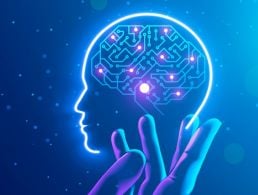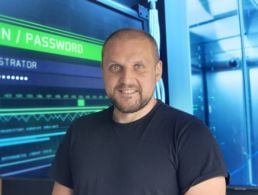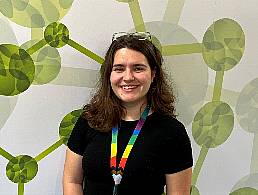Matthew Beckingham of Citi discusses moving from particle physics to data science, and how his experience has helped him in his current role.
Matthew Beckingham, a senior data scientist in Citi, moved into the field from his previous role as a particle physicist. Between getting to grips with working with staff in different time zones and finding the best approach to solve challenges, his time at the company has been a learning curve.
Here, he discusses the day-to-day tasks that accompany his job in Citi’s Dublin Innovation Lab.
‘It’s a bit of a cliché, but there’s not a totally typical day in this job’
– MATTHEW BECKINGHAM
What is your role within Citi?
I’m a data scientist working in the Citi Innovation Lab in Dublin. We are part of the Treasury and Trade Solutions (TTS) business of Citi.
If there is such a thing, can you describe a typical day in the job?
It’s a bit of a cliché, but there’s not a totally typical day in this job. However, I always start the day by catching up with people I’m working with here in Dublin and other parts of the world.
I’ll review the tasks that I’ve got planned out for the day. They could include analysing and understanding data, developing machine learning models or showing that our models are ready to be used. I’ll often meet with people inside my team, across the wider organisation or with external companies.
I’ll take some time to research and learn about new techniques and solutions and read about new trends (either in data science or related to wider banking areas).
What types of project do you work on?
I work on projects that range from early proof of concepts to those going into production. These can be in areas across those covered by TTS at Citi, including payments, liquidity and client interactions.
The projects will generally involve large data sets and machine learning, such as neural networks. We’ll use these to gain insights, make predictions of things like future balances or detect outliers in clients’ payments.
What skills do you use on a daily basis?
I use a mixture of technical and soft skills every day. I’ll program, mainly in Python, to understand data, make visualisations, and train and test machine learning models. I’ll communicate the progress that I’m making with wider groups, as well as understanding the non-technical aspects of any projects that I’m working on.
I’ll also use a variety of teamworking skills to make sure that I’m working well with the teams I’m part of and we’re being effective.
What is the hardest part of your working day?
One of the trickiest parts of the day is working with people in multiple locations and time zones. This has many positives, because you get to work with different people with different perspectives. However, the practicalities mean that you have to almost over-communicate information and be conscious that you may only have limited working hours when you overlap with each other.
Another nice challenge to have is finding the best solution to a problem. In data science, there are often different approaches that can be used for a particular project. Finding the best one – based on effectiveness or speed to delivery – using either a tried and tested method or from a new technique that you’d like to try out, is a nice challenge to have.
Do you have any productivity tips that help you through the working day?
One of the old favourites that I find useful is to-do lists. Keeping a list based on longer time scales, with another daily one, is useful. Then reflecting on these regularly to make sure things are progressing and aligned with wider goals is helpful.
On a micro-level, booking time in your diary for specific tasks gives you a chunk of time to work on it without interruptions. Another way to get into that productive zone can be to pop on headphones and listen to some good music. That said, you often make big jumps forwards by talking to and collaborating with others, [so] keeping up communication is important too.
When you first started this job, what were you most surprised to learn was important in the role?
I came into data science after working as a particle physicist in universities. One contrast is the importance in this role of communicating in a clear and impactful way to people who don’t have similar technical backgrounds. I can, however, use these differences in backgrounds to ask domain experts in cross-functional teams low-level questions that ultimately make our projects better.
Another area that I was pleasantly surprised about was how working in a large scientific organisation gave me transferable skills for business – things such as working on complicated, time-bound projects and working with multi-cultural and multi-location teams.
How has this role changed as this sector has grown and evolved?
Even in the last few years, there have been changes in the role. Data, data science and machine learning have become much more mainstream within banks. This has led to having larger internal communities of people involved in data science and also to more opportunities to apply these skills.
There are lots of tech and fintech companies around who can provide great solutions that are relevant to what we do. There’s also a willingness to work with other companies. This means that a new element to the role can be assessing an external solution or collaborating with them.
What do you enjoy most about the job?
I like that I get to work with a great bunch of people – people who have different backgrounds and skillsets and can bring diverse outlooks and approaches to the table. Sometimes a coffee break can lead to a new idea that you wouldn’t have thought of otherwise.
Because data science is a fast-moving field, I get to learn new skills, techniques and knowledge. I get to take on and solve challenging problems and build solutions that can have an impact on people across a large organisation like Citi and for Citi’s clients.




